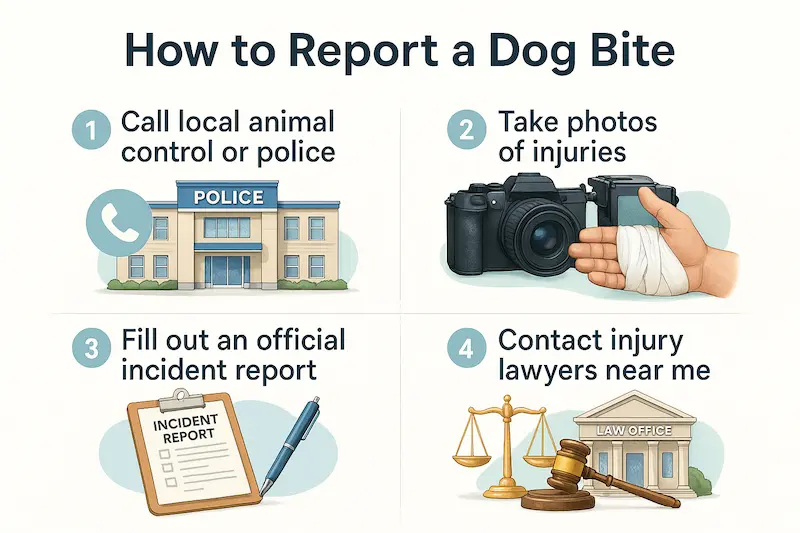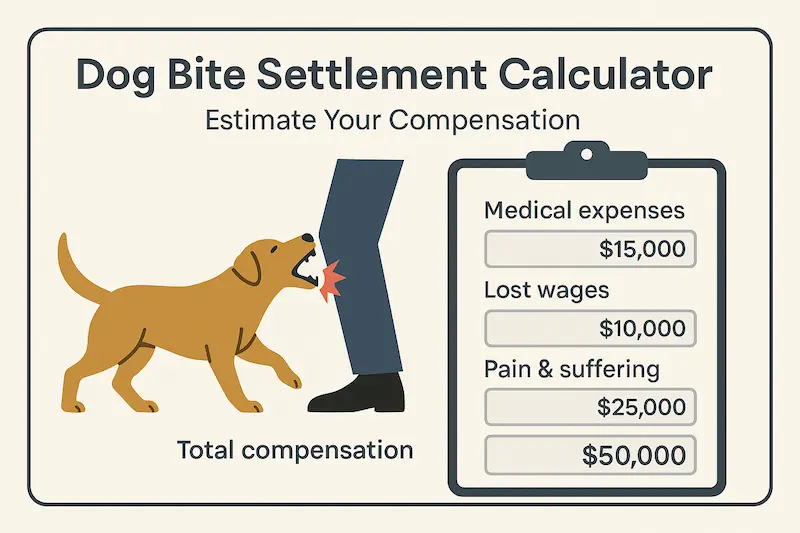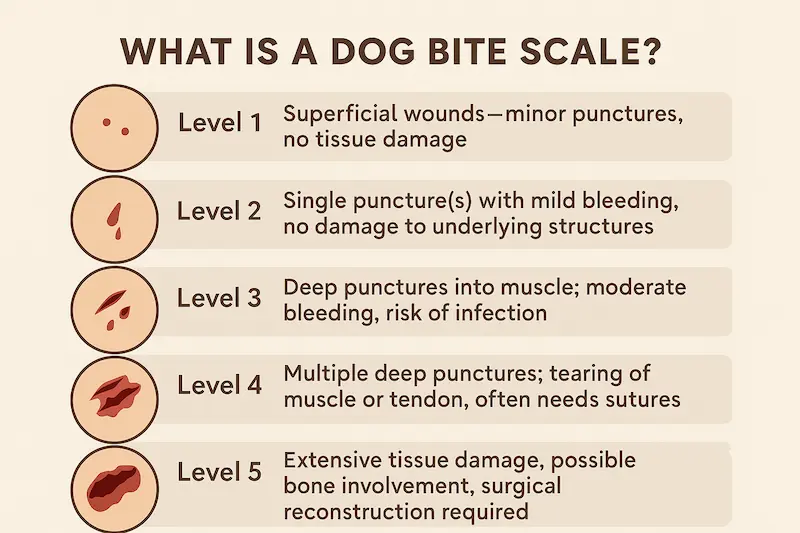In the chaotic moments following a dog bite, your first instinct is to get to safety and seek medical attention. But once the immediate danger has passed, you are faced with a critical decision:
what to do next?
One of the most important actions you can take, both for your own well-being and for the safety of your community, is to report a dog bite to the proper authorities.
Filing an official dog bite report may seem like a daunting task, but it is a straightforward process that creates a vital legal and public health record. This report becomes the foundational piece of evidence for any future dog bite claim and triggers an official response to ensure the animal is not a further threat. This guide provides clear, step-by-step instructions on how to file a dog bite report, who to contact, and why you cannot afford to skip this step.
Act immediately if any of these apply
If you’re facing a dog attack or aftermath that meets the criteria below, contact legal help now to protect your health, rights, and potential compensation.
Injuries are severe
Owner is hostile, uncooperative, or fled
Attack is happening now and is an immediate threat
You cannot reach your local animal control agency
Why Reporting a Dog Bite is Non-Negotiable
Some victims, especially if they know the dog’s owner, hesitate to make an official report. They may feel it’s too aggressive or will create unnecessary trouble. This is a mistake. Reporting a dog bite serves two crucial purposes that you must consider.
Protecting Public Health and Safety
An unreported bite is a future attack waiting to happen. Your report initiates an investigation by animal control to assess the animal’s danger to the community. It also serves a critical public health function:
-
Rabies Verification
The most immediate concern is rabies. Authorities will need to verify the dog’s vaccination status. If the animal was an unvaccinated dog bite case, you may need to undergo a series of painful post-exposure shots. Your report ensures the dog is located and either its vaccination records are confirmed or it is quarantined for observation.
-
Creating a Record
The report creates an official history for the animal. If the same dog attacks someone else in the future, your report will serve as proof that the owner was aware of the dog’s aggressive tendencies, which can be critical in establishing liability.
Creating the Foundation for Your Legal Claim
If you decide to seek compensation for your medical bills, lost wages, and suffering, your official dog bite report is the single most important piece of evidence you can have.
-
It Establishes the Facts
The report is an official, third-party document that corroborates the date, time, location, and basic circumstances of the incident. It proves the event happened.
-
It Shows You Took the Matter Seriously
Insurance companies look for reasons to devalue or deny claims. Having a timely, official report demonstrates that the incident was serious enough to warrant official intervention, which strengthens your position during negotiations. Without it, an adjuster might argue the injury wasn’t severe or didn’t happen the way you said it did.
Who Do I Report a Dog Bite To? Identifying the Right Agency

Knowing who to call can be confusing. Generally, you will report the incident to one of two local government agencies.
This is typically the primary agency responsible for handling dog bite incidents across the United States. They are responsible for enforcing animal-related laws, investigating bite cases, and managing potentially dangerous dogs. You can usually find their contact information through your state’s official website, local government directory, or by calling the non-emergency number of your local police department.
The Police or Sheriff’s Department You should call the police in addition to, or instead of, animal control in certain situations:
The injuries are severe.
The dog’s owner is hostile, uncooperative, or has fled the scene.
The attack is happening right now and poses an immediate threat.
You cannot reach your local animal control agency.
The police can file a report and will often coordinate with the appropriate animal control officers.
Your Window to File is Closing. Act Now.
The statute of limitations is non-negotiable. Protect your rights before the legal deadline expires.
🛡️ Start My Free Case ReviewThe Step-by-Step Process: How to File a Dog Bite Report
Follow these steps to ensure your report is complete and effective.
How Long Do You Have to Report a Dog Bite?
This is a common question with two answers: the practical and the legal.
Practically
You should report the bite as soon as possible, preferably within hours or, at most, a few days. A prompt report is more credible and allows authorities to investigate while evidence and memories are still fresh.
Legally
The deadline for filing a lawsuit for a personal injury is called the statute of limitations, which is typically two or three years, depending on your state. However, waiting that long to report the bite would be a grave mistake.
An insurance company would almost certainly use a months-long delay in reporting to argue the incident wasn’t serious.
Taking swift action is your best strategy. Filing a report is a foundational step that protects you and preserves your legal options, paving the way to sue for a dog bite and get the justice you deserve.




